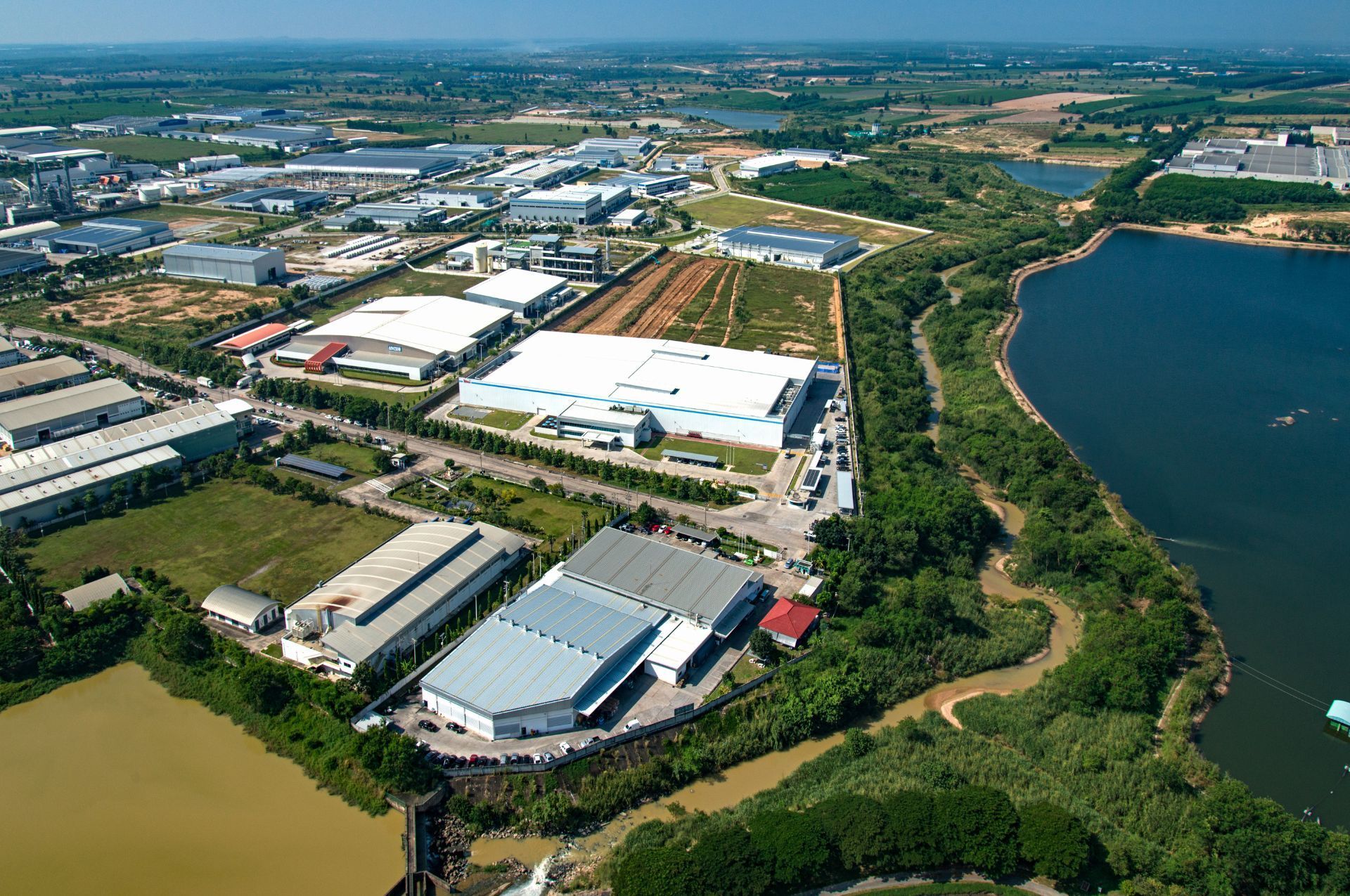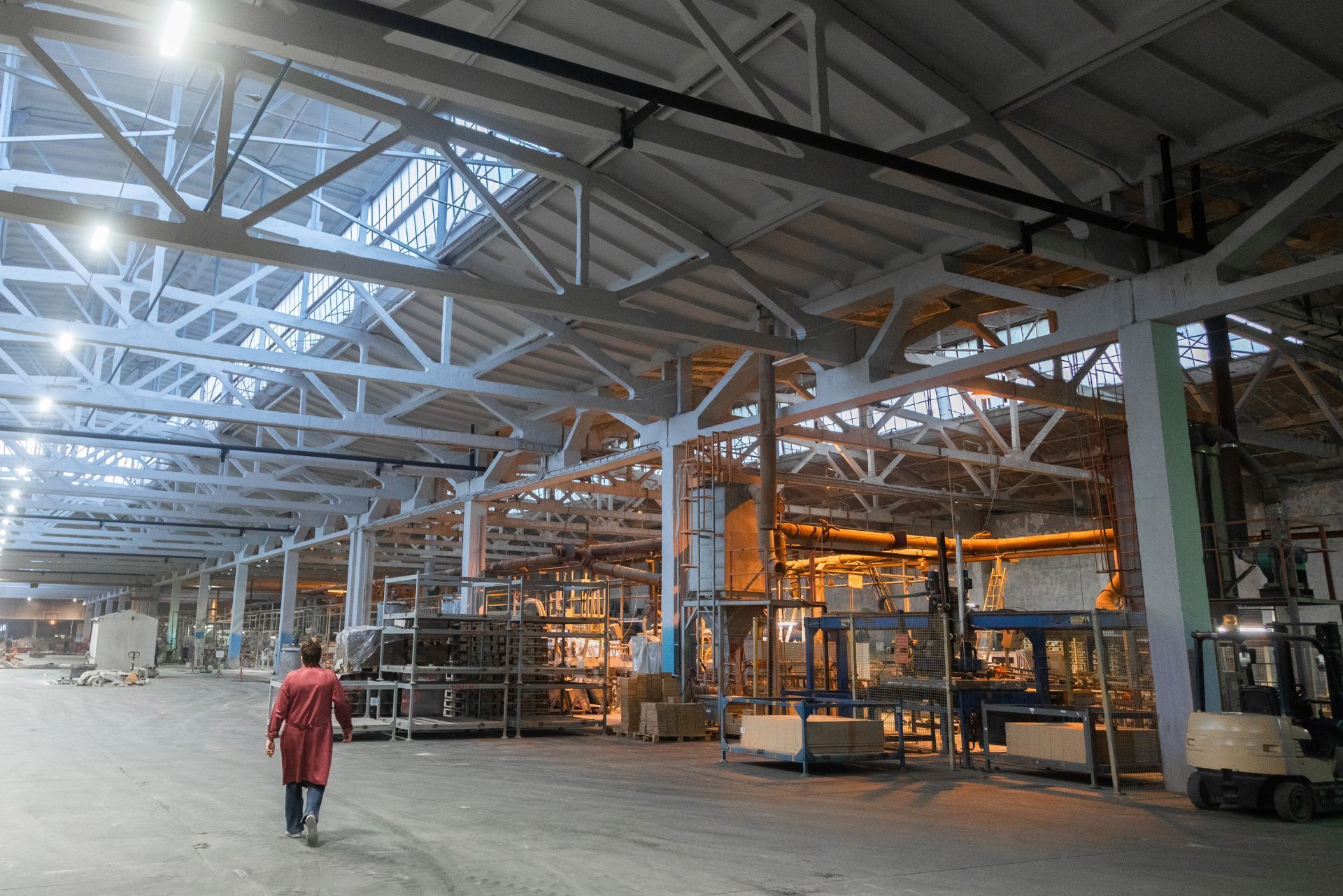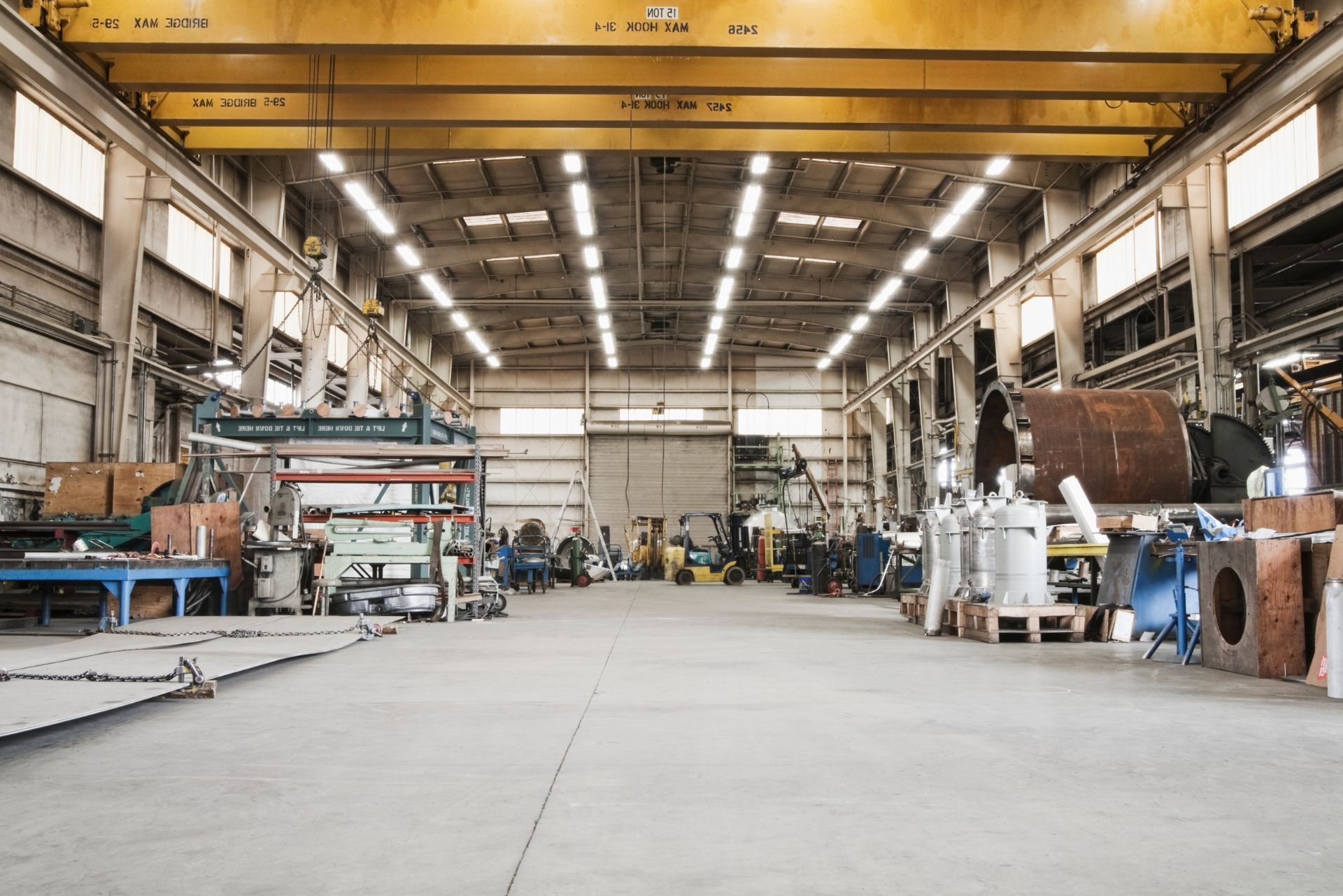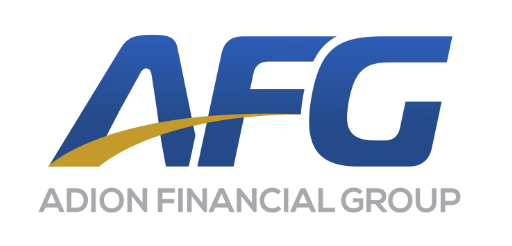
Top 3 Recommended Policies
Connecticut’s industrial property insurance market is a dynamic and essential component of the state’s broader insurance landscape. As the Property, Casualty, and Direct Insurance industry in Connecticut is projected to reach an impressive $17.1 billion by 2025, understanding the nuances of industrial property insurance becomes crucial for business owners, investors, and stakeholders alike. This article delves into the current trends, regulatory environment, and market outlook for industrial property insurance in Connecticut, offering a comprehensive guide to navigating this evolving sector.
Overview of Connecticut’s Industrial Insurance Market
Connecticut has long been recognized as a significant hub for the insurance industry, with a reputation for innovation and financial strength. The state’s industrial property insurance sector plays a pivotal role in protecting commercial assets, including warehouses, manufacturing facilities, and distribution centers, against risks such as fire, natural disasters, theft, and liability claims.
Recent reports, such as the 2024 Connecticut Insurance Capital Insights, emphasize Connecticut’s influential position in the global insurance market. The state continues to push forward with innovative solutions and regulatory frameworks designed to attract and retain businesses, making it a fertile ground for industrial property insurance growth.
Moreover, the industrial real estate market in Connecticut has remained relatively stable, with a 2024 survey by the Society of Industrial and Office Realtors (SIOR) indicating that 55% of respondents expect no change in industrial lease rates through the end of the year. This stability in industrial property demand underscores the importance of robust insurance coverage to mitigate potential risks associated with these assets.
In addition to its established insurance framework, Connecticut is home to a diverse array of industries, including aerospace, pharmaceuticals, and advanced manufacturing. This diversity not only enhances the resilience of the state’s economy but also creates unique insurance needs that require tailored solutions. For instance, the aerospace sector, with its high-value assets and complex supply chains, necessitates specialized coverage options that address the specific risks associated with aircraft manufacturing and maintenance.
Furthermore, the state’s commitment to sustainability and green initiatives is influencing the industrial insurance landscape. As more businesses adopt eco-friendly practices and seek coverage for renewable energy projects, insurers are adapting their policies to accommodate these emerging trends. This shift is not only beneficial for the environment but also opens up new avenues for insurance providers to develop innovative products that cater to the evolving needs of Connecticut's industrial sector.

Key Trends Impacting Industrial Property Insurance in Connecticut
Several trends are shaping the industrial property insurance landscape in Connecticut today. One of the most notable is the significant increase in insurance claims and premiums, reflecting broader economic and environmental pressures.
In 2022, property and casualty insurance claims in Connecticut totaled approximately $6.4 billion, marking a 51% increase over the previous 14-year average. This surge is indicative of rising risks, including more frequent and severe weather events, which directly impact industrial properties. Additionally, the Bridgeport-Stamford corridor experienced a remarkable 23% increase in commercial property and casualty insurance premiums in August 2024, ranking among the highest premium hikes nationwide. This spike is largely attributed to fears of flooding and other climate-related risks in the region.
These developments highlight the growing importance for industrial property owners to reassess their insurance strategies and ensure adequate coverage against emerging threats. Furthermore, the evolving regulatory landscape is also playing a crucial role in shaping insurance practices. As state and federal governments increasingly prioritize sustainability and climate resilience, insurers are adapting their policies to include incentives for businesses that implement eco-friendly practices. This shift not only encourages industrial property owners to invest in greener technologies but also provides them with potential cost savings on their premiums.
Moreover, the rise of advanced data analytics and technology in the insurance sector is transforming how risks are assessed and managed. Insurers are now leveraging big data to analyze patterns and predict potential losses more accurately. This trend is particularly relevant in Connecticut, where the unique geographical and climatic conditions necessitate a tailored approach to risk assessment. As a result, industrial property owners may find themselves benefiting from more customized insurance solutions that reflect their specific operational risks and environmental challenges. This technological evolution is paving the way for a more proactive approach to risk management, enabling businesses to not only safeguard their assets but also enhance their operational resilience in an increasingly unpredictable world.
Regulatory Environment and Its Impact on Industrial Insurance
Connecticut’s regulatory landscape is evolving rapidly to keep pace with the changing needs of the insurance industry. The Insurance Department has been proactive in introducing new regulations aimed at enhancing market accessibility and innovation.
In June 2024, the department implemented new rules to facilitate the formation of cell captives—specialized insurance entities that allow small and medium-sized businesses to pool risks and benefit from tailored coverage. This regulatory shift is expected to attract more businesses to the insurance market, providing them with flexible and cost-effective options for industrial property insurance.
Fenhua Li, director of the captive insurance division at Connecticut's Insurance Department, noted, “The business is evolving so quickly,” underscoring the department’s commitment to adapting regulations to meet contemporary challenges and opportunities.
These advancements not only enhance the competitiveness of Connecticut’s insurance market but also offer industrial property owners innovative ways to manage risk more effectively. Furthermore, the introduction of technology-driven solutions within these new frameworks allows for greater transparency and efficiency in underwriting processes. Insurers can leverage data analytics and artificial intelligence to assess risks more accurately, leading to more personalized insurance products that cater to the unique needs of each business.
Moreover, the regulatory changes are also fostering a collaborative environment among insurers, regulators, and businesses. By encouraging dialogue and feedback, the Insurance Department is ensuring that the voices of all stakeholders are heard in the regulatory process. This collaborative approach not only helps in refining existing regulations but also paves the way for future innovations in the insurance sector, making Connecticut a leader in industrial insurance solutions.
Challenges Facing Industrial Property Insurance in Connecticut
Despite the promising outlook, several challenges persist within the industrial property insurance sector. The sharp rise in claims and premiums presents affordability issues for many businesses, especially in high-risk areas such as the Bridgeport-Stamford corridor.
Flooding and other natural disasters have become increasingly frequent, driving insurers to adjust their risk models and pricing strategies. This has led to heightened premiums and, in some cases, stricter underwriting standards, which can limit coverage availability for certain industrial properties. The impact of climate change cannot be overstated, as it has resulted in unpredictable weather patterns that complicate risk assessments. Insurers are now tasked with not only evaluating historical data but also forecasting potential future risks, which can lead to significant variability in policy costs and terms.
Additionally, while the industrial lease market remains stable overall, the broader commercial real estate sector faces uncertainties, particularly in office spaces, which can indirectly affect industrial property valuations and insurance needs. The shift towards remote work has left many office buildings underutilized, creating a ripple effect that could depress demand for industrial spaces that support these operations. Furthermore, as companies reassess their supply chains in light of recent global disruptions, the need for flexible logistics and warehousing solutions becomes paramount. This evolving landscape raises questions about the adequacy of existing insurance policies and whether they can adapt to the new realities of industrial operations.
Moreover, the increasing reliance on technology and automation within industrial settings introduces a new layer of complexity to insurance underwriting. Cybersecurity threats pose significant risks to operational continuity, and businesses must now consider cyber liability coverage as part of their overall insurance strategy. Insurers are beginning to recognize the importance of including such coverage in their policies, but this can also lead to increased premiums as they seek to mitigate their own risks associated with these emerging threats. As a result, industrial property owners in Connecticut must navigate a multifaceted insurance landscape that requires them to stay informed and proactive in managing their coverage needs.

Opportunities for Industrial Property Owners and Insurers
Despite these challenges, there are significant opportunities for industrial property owners and insurers willing to adapt and innovate. The introduction of cell captives offers a promising avenue for businesses to gain more control over their insurance programs and potentially reduce costs. By utilizing cell captives, companies can tailor their coverage to fit their specific risk profiles, allowing for a more personalized approach to risk management. This flexibility not only helps in managing expenses but also enhances the overall resilience of businesses against unforeseen events.
Moreover, Connecticut’s position as an insurance capital fosters a collaborative environment where insurers, regulators, and businesses can work together to develop cutting-edge risk management solutions. This collaborative spirit is reflected in ongoing efforts to harness data analytics, improve catastrophe modeling, and implement sustainable insurance practices. By leveraging advanced technologies such as artificial intelligence and machine learning, insurers can better predict risks and offer more accurate pricing models, ultimately benefiting both policyholders and the insurance industry as a whole.
For industrial property owners, investing in risk mitigation measures such as flood defenses, fire prevention systems, and security enhancements can also lead to more favorable insurance terms and premiums. Additionally, adopting smart technology solutions, such as IoT devices for real-time monitoring and predictive maintenance, can further reduce risks and enhance operational efficiency. These proactive measures not only safeguard assets but also demonstrate to insurers a commitment to risk management, potentially leading to lower deductibles and enhanced coverage options.
Furthermore, as environmental concerns continue to rise, industrial property owners who prioritize sustainability may find themselves at an advantage. Implementing green building practices and energy-efficient systems can not only reduce operational costs but also attract insurers who are increasingly focusing on sustainability metrics in their underwriting processes. This shift towards environmentally responsible practices not only aligns with global sustainability goals but also positions businesses favorably in a market that increasingly values corporate social responsibility.
Looking Ahead: The Future of Industrial Property Insurance in Connecticut
The future of industrial property insurance in Connecticut appears robust but will require continuous adaptation to evolving risks and market conditions. The state’s projected industry growth to $17.1 billion by 2025 signals strong demand and expanding opportunities within the sector.
Ongoing regulatory innovation, combined with technological advancements and a focus on resilience, positions Connecticut to maintain its leadership in the insurance industry. Businesses that stay informed about market trends and leverage new insurance products will be best equipped to protect their industrial assets and thrive in this competitive environment.
As the landscape of industrial property insurance evolves, the integration of data analytics and artificial intelligence is becoming increasingly vital. Insurers are now able to assess risks with greater precision, allowing for more tailored policies that reflect the unique needs of individual businesses. This shift not only enhances the underwriting process but also empowers companies to make informed decisions regarding risk management and loss prevention strategies. Furthermore, the rise of smart technologies in industrial operations means that insurers must also consider cyber risks and the potential for data breaches, adding another layer of complexity to the insurance landscape.
For more detailed insights into Connecticut’s insurance market and its global significance, the
Connecticut Insurance and Financial Services (CT IFS) 2024 report offers an excellent resource. Additionally, the report delves into the implications of climate change on industrial properties, highlighting the need for adaptive insurance solutions that can address natural disasters and environmental risks. As businesses in Connecticut face increasing pressure to implement sustainable practices, insurers are also exploring green insurance products that incentivize eco-friendly initiatives, further shaping the future of the industry.
Conclusion
Connecticut’s industrial property insurance market is at a pivotal juncture, shaped by rising claims, regulatory changes, and emerging risks. Understanding these factors is essential for industrial property owners seeking to secure comprehensive and cost-effective coverage.
By staying abreast of market developments, leveraging innovative insurance structures like cell captives, and implementing proactive risk management strategies, businesses can navigate the complexities of the Connecticut insurance landscape with confidence.
As the industry continues to evolve, Connecticut remains a beacon of innovation and resilience in the global insurance arena, offering valuable opportunities for those engaged in industrial property insurance.
Contact Us
Phone
Locations
Connecticut Location
703 Hebron Ave., 3rd Floor, Glastonbury, CT 06033
North Carolina Location
436 East 36th St., Charlotte, NC 28205


